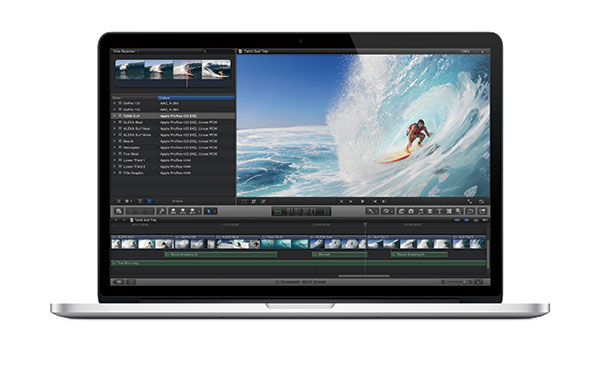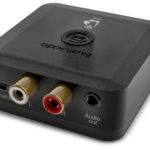
Review (re-visit): Apple FCP-X Editor
Posted on May 28, 2013 by Alex Fice
“It hasn’t been a totally smooth ride though. Craig has noticed that the performance of the software varies throughout the day.”
Apple’s Final Cut Pro ‘X’ edition has been the whipping boy of the professional editor’s world for the last couple of years. But there were supporters who were sure that Apple would re-instate the fundamental ingredients of their v7 software. Now their support has been justified as the BBC start cutting programmes with an ‘X’ on them. NICKI MILLS reports.
Although there was an endless, and pointless, debate about whether Final Cut Pro X deserved the epithet ‘Pro’, it was clear on its launch that it was missing functions required by editors working in high-end TV and feature film production. Walter Murch, referring to the lack of EDL, OMF/AAF and XML support, famously gave it the report card, “Does not play well with others.”
Slowly but surely, however, Apple have been adding in the features that we need. First came multicam and XML – which, crucially, allowed third party software vendors to provide some of the missing inputs and outputs. Then we got external monitor support, separate ‘canvas’ and ‘viewer’ windows, persistent clip In and Out points, and so on. It seemed that most of the hurdles preventing FCP X’s use at the higher end had been removed.
That’s certainly the belief of Craig Slattery, a freelance editor who has become the first person to cut items for the BBC’s Culture Show on FCP X.
“I’ve been cutting features for the Culture Show on Final Cut since about version 4 or 5, so I bought a copy of FCP X pretty much as soon as it was released. Then, in October 2012, with the latest updates, I though it was time we tried it out on a real programme.”
Craig edits The Culture Show at the BBC’s Media Centre in White City which, like most large post-production organisations, has a huge, Fibre Channel based SAN, so that any production can be edited from any suite. For his first forays into FCP X, however, Craig is using a stand-alone suite, with storage provided by a Pegasus RAID. Culture Show specials, like the recent Danny Boyle feature, can have several TB of footage.
“We did the whole of the Danny Boyle special in FCP X, and we didn’t want to pick out clips from his films before the edit began, so we just captured all of his feature films, like Trainspotting, whole,” Craig explains. The interviews and presenter pieces-to-camera are also filmed using multi-camera setups, resulting in a lot of footage. “We usually have three or four cameras on a shoot, so we had to wait until FCP X got multi-cam, but we haven’t had any problems with the number of clips or the size of the files.” Indeed, Craig uses the flexibility of the multicam support to speed the edit. “I got the first couple of camera angles of Danny’s interview in early, so I cut the conversation from those, then went back and added the other two angles to the multicam group and cut them in.”
Culture Show shoots use a number of different camera systems, from Canon 5Ds to XDCAM. Although Craig’s edit suite isn’t connected to the SAN, all the footage is still transcoded to ProRes and to ProRes Proxy, and copied onto his RAID by the BBC’s post-production support group, the Production Village. Their support, and the support of the Culture Show’s producers, has been enthusiastic.
“I just said ‘Let’s give it a go’ and we haven’t looked back,” Craig explains. “When we were cutting using FCP 7, if you asked a producer which clip they meant by pointing to the timeline, they would just look at it – and you – blankly. After just a couple of hours with FCP X, the interface is so intuitive you almost have to keep them from grabbing hold of the mouse themselves.”
The edit suite consists of an iMac, running FCP X, with a second computer monitor. The iMac is coupled to a Blackmagic UltraStudio Mini Monitor Thunderbolt converter to provide an output to a broadcast quality video monitor, and a Pegasus Thunderbolt RAID. Interestingly, Craig found that this setup seemed noticeably faster than FCP X running on the multi-processor Mac Pros that the BBC usually uses.
Although it’s a stand-alone suite, in TV it’s rare for a programme to be started and finished on a single machine. Craig uses the third-party application X2Pro to generate AAF files from his edit, which then go off to sound post to be edited and mixed in ProTools.
“You just have to be sure to assign all the audio to appropriate ‘Roles’ before you generate the AAF,” he explains. “So I do this at the end of a cut – it takes me about 20 minutes just to go through the timeline and say this clip is dialogue, this is music, this is a sound effect, and so on.” Craig worked closely with the programme’s audio editors to make sure that he gave them the AAF that they needed and, after some initial issues were solved, they now have few problems importing X2Pro’s files into ProTools. Each Role generates a separate track in the ProTools session, so this process can be more accurate than with some undisciplined FCP 7/Avid editors, who tend to scatter audio around their timeline with abandon.
Grading is currently done in Apple’s discontinued Color – though the production intends to switch to DaVinci Resolve within a couple of months – a workflow that is pretty straightforward from FCP X. The graded footage for the whole show is then returned to FCP 7 for on-line (which Craig does himself), but Craig hopes soon to start finishing the complete programme in FCP X.
It hasn’t been a totally smooth ride though. Craig has noticed that the performance of the software varies throughout the day.
“It’s not really something you can put your finger on, but sometimes it just feels a little sluggish. Then, twenty minutes later, it seems to be really singing. It is still a bit buggy though – we get about a crash a day. It’s not too bad – you never lose anything – when you open up the project again, you’re right back where you were.”
Much of the BBC’s programming has now moved from White City to Broadcasting House, which doesn’t have enough in-house editing facilities, so many programmes are now post-produced in various locations in central London. Craig worries that this will kill some of the momentum that he has gained with FCP X, though he has been asked to talk to various executives in charge of planning and procurement at the Beeb.
“It’s really up to us – the editors,” he says. “There’s really no reason that FCP X won’t do the job now and, once you’ve got your head around it, it’s so much faster than FCP 7. To drive it forward, we really need to be asking our productions if we can use it.”









